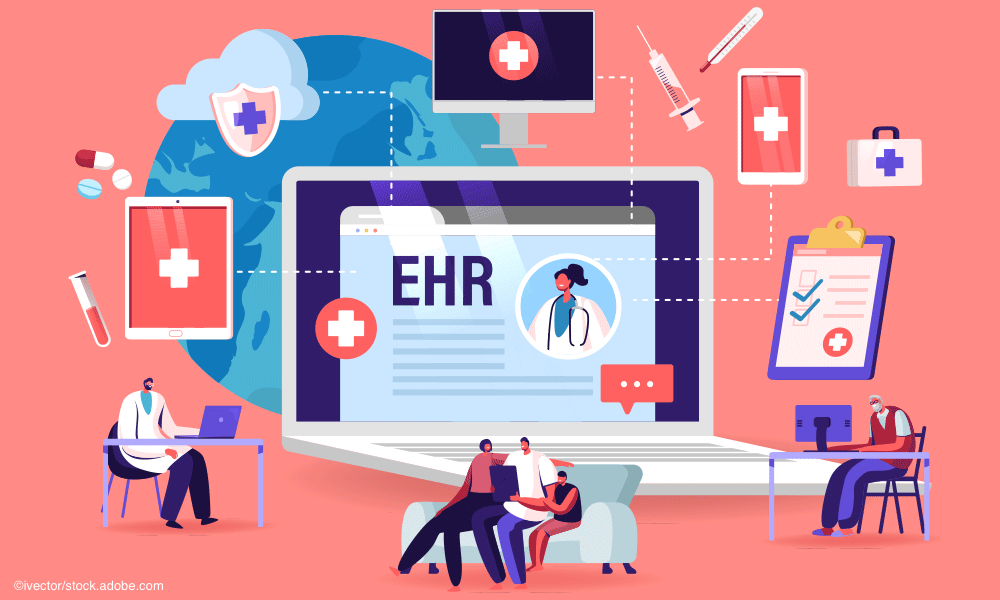- Industry News
- Law & Malpractice
- Coding & Documentation
- Practice Management
- Finance
- Technology
- Patient Engagement & Communications
- Billing & Collections
- Staffing & Salary
Succeed with an EHR-agnostic revenue cycle platform post-COVID19
Align with consumer demands for optimal patient experiences and operational efficiencies.

While COVID-19 has presented challenges to every healthcare industry sector, physician practices have taken some of the most significant financial hits over the past few months. A recent Medical Group Management Association (MGMA) survey found that 97 percent of practices have experienced a negative financial impact directly or indirectly related to COVID-19.
To recoup lost revenue, practices now face the challenge of re-engaging with patients and convincing them to schedule appointments and come back to the office. But when patients do decide to return, they’ll expect the same easy, contactless consumer experience they’ve been receiving during quarantine from companies such as Amazon, Netflix and Zoom.
During these uncertain times, it’s important to think strategically; many physician practices should consider working with partners who can help them identify solutions to ensure business continuity, while also addressing safety concerns and consumer needs. This article will specifically look at how an EHR-agnostic revenue cycle platform can drive substantial improvements to the patient financial experience and help physician practices operate effectively in the post COVID-19 world.
EHR and revenue cycle alignment
An EHR system is a critical component of any healthcare organization’s infrastructure. In addition to digitally recording patient data—including medical history, treatment plans, and insurance information—it easily transfers this information between various providers versus relying on front desk staff to fax or email paper records. Similarly, it’s important to have digital alignment between a practice’s EHR system and an RCM platform to easily transfer patient data across the continuum of care, and ensure claims are billed correctly and collected efficiently on the back end.
Instead of trying to connect disjointed solutions across a patient’s care continuum, an EHR-agnostic revenue cycle platform has the technology, automation, and performance analytics needed to create standardized workflows that ensure full data transparency and a seamless exchange of information. This ensures timely reimbursement, lower denial rates and increased cash flow, while reducing operating costs since much of the traditional back and forth manual work is eliminated.
Increase Patient Volume and Satisfaction
Interoperability between an EHR system and the revenue cycle offers major benefits to both physician practices and their patients, especially in our current environment. Embedding automated RCM workflows into a practice’s EHR system allows for faster hand-offs of patient information throughout the revenue cycle process. This reduces cost to collect, speeds up and ensures accuracy for patient payments, and allows practice staff to focus on more strategic tasks such as proactive patient outreach.
To increase volume and revenue in the coming months, practices need to get patients to schedule wellness checkups and appointments for elective procedures. Given that many practices will most likely be working with smaller teams, staff members need to focus on bringing business back into the practice versus keeping up with administrative work and billing procedures. Because EHR-agnostic revenue cycle platforms also offer digital patient experience solutions, it enables practices to send on-demand messaging via email or text. Practices can use these communication tools to remind patients to schedule appointments, utilize telehealth services, and notify patients of safety procedures implemented in response to COVID-19.
From a patient perspective, EHR-revenue cycle alignment delivers the optimal financial experience. It eliminates the need to fill out clipboards of information during each visit, and for patients to work with practice staff to receive medical records, fax them to different providers and then complete all new paperwork when referred to another specialist. Having a digital patient record that can be easily transferred through the revenue cycle process on the back end makes the financial and administrative aspect of receiving care much easier, which in turn encourages patients to schedule future appointments.
The digital patient experience solutions that are part of EHR-agnostic revenue cycle platforms also offer many patient-preferred capabilities. Tools like online/mobile self-scheduling and registration, self-service check-in, and online bill pay/automated payment plans help facilitate the convenient, user-friendly, and contactless experiences today’s consumers are looking for and expect—especially when factoring in COVID-19. If a patient knows they can easily schedule an appointment with little to no in-person interaction during the actual care experience, they will be much more likely to engage.
Transform Your Revenue Cycle Now
It’s no secret that we’re operating in a different world as a result of COVID-19. To thrive in this new environment will require adopting new technology that allows consumers to receive services the way they want them. Being that it’s expensive to build, manage and maintain an effective revenue cycle platform in-house, the best approach is to work with an end-to-end revenue cycle partner that has experience integrating with existing EHR systems and knows how to effectively automate internal workflows to see the best results.
As practices work to determine where to go from here, they need to consider how revenue cycle transformation can help reduce administrative burdens, create better experiences for patients and most importantly improve financial health during this difficult time. Practices are already facing enough challenges coming out of COVID-19–don’t let an inefficient revenue cycle continue to be something that holds you back. Instead, take the first step toward being the cohesive, convenient provider patients want and need right now.
About the Author
Richard Lopez del Rincon is Senior Vice President, Office-Based Physicians at R1 RCM
